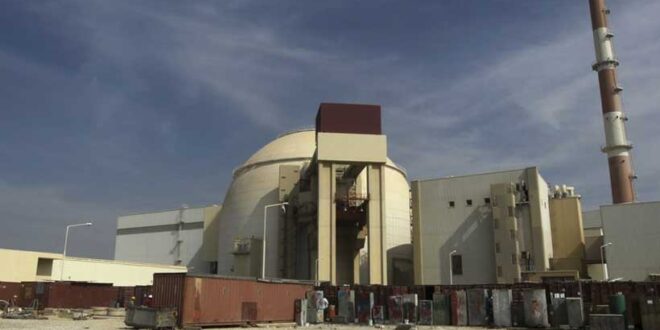Ehud Eilam
Israel and Iran used to be partners, until 1979. Since then, following the Islamic revolution, there has been a conflict between them. Iran’s nuclear program is getting closer to producing nuclear weapons. It is a top concern for Israel, since Iran had threatened to destroy Israel. The latter, according to non – Israeli sources, has nuclear weapons. A nuclear war between Iran and Israel might start because of several reasons, including miscalculations by one or both sides. The ramifications of such a war, for both states, would be horrible. Israel, therefore should try to prevent Iran from having nuclear weapons. As a last resort, the IAF (Israel air force) might bomb Iran’s nuclear sites,
In early August 2023, the chief spokesperson of the IDF (Israel Defense Forces) acknowledged that following the political crisis in Israel, some reserve troops refused to serve. This harms the readiness of the IDF . It seems to be mostly in the IAF. If this process continues, it would affect Israel’s chances of inflicting substantial damage to Iran’s nuclear sites. The IAF already faces significant challenges in this matter. Iran is more than a thousand kilometers from Israel, so the IAF needs the new KC – 46 aerial tankers, but those aircraft are expected to arrive to Israel only in 2025. Israel asked the United States to receive them before late 2024. The IAF can attack without them, by relying on drop tanks and very old aerial tankers, but it will make its task in Iran more complicated and riskier. Israel might then lose planes for lack of fuel.
Iran has the Russian S- 300, a sophisticated air defense system, that might shoot down Israeli aircraft and disrupt IAF’s operations in Iran. Israel might overcome Iran’s S- 300 and other antiaircraft batteries, without losing many aircraft. Yet Iran seeks to get the Russian S – 400, a highly advanced air defense system, making it harder for the IAF to attack in Iran. It might take Iran two years to assimilate the S- 400. In this period, Israel has to decide if the S- 400 can reduce her chances of success to such a degree that an attack will not be worth it. Israel has to attack in two years, before Iran assimilates the S- 400. It depends on calculations such as can Israel’s stealth fighters, the F- 35, handle the S- 400? What would be the cost? Israel is very sensitive about casualties, including POWs). On the other hand, it is such a crucial mission that Israel might be willing to pay a high price.
Iran’s air force has old fighters such as Mig 29 and F – 14. Iran might assimilate better ones, the SU- 35, a highly capable fighter. The latter might arrive to Iran sooner than the S- 400. However, it might be easier for the IAF’s F- 35, F- 15I and F- 16I to deal with the SU – 35 than with the S- 400. In that sense giving the SU – 35 adds some pressure on Israel to attack before Iran gets them, but it is less pressure on Israel than in the case of the S – 400.
Iran has well-fortified nuclear sites like the one in Fordow. The US military has the MOP (Massive Ordnance Penetrator), to crack the protection of those facilities. In 2023 Iran has been building a new nuclear site “likely impenetrable to US bunker busters”. The MOP might not be that effective against this new site. Either way the IAF did not receive the MOP. The IAF only has much smaller bunker buster bombs, the GBU-28. Israel does have new missiles that might help in penetrating Iranian sites. The IAF can also use special tactics to crack thick Iranian fortifications.
Following an Israeli strike in Iran, the latter can retaliate in several ways. Iran has the SU – 24, a long-range attack aircraft, yet it is pretty old and might be intercepted by the IAF, before it reaches its target in Israel. Iran has better chances with cruise missiles and drones that, on September 14, 2019 caused vast damage to Saudi oil facilities. Iran might hit similar sites in Israel or other objectives there. Iran can also fire its long range ballestic missiles. Israeli Arrow antimissile systems are supposed to intercept those missiles. In August 2020 Israel successfully tested the Arrow 2, in shooting down a simulated long-range missile, which behaved as an Iranian ballistic missile. Israel also has the Arrow 3, which became operational in January 2017.
The IDF presented on August 9, 2023 its new multi-year program “Ma’alot” (Ascent), which is aimed against Iran and its partners. Iran’s strongest ally is Hezbollah, a terror group based in Lebanon, nearby Israel. Hezbollah has 150,000 rockets and missiles that can hit all over Israel. Hezbollah might also launch ground raids into northern Israel. Yet Hezbollah absorbed severe casualties during its involvement in the Syrian civil war. A war with Israel might be more costly to Hezbollah than its fight in Syria, which concerns Hezbollah. This group also knows that Lebanon, particularly its Shiite community, will suffer greatly if there is a war with Israel.
On the other hand, Hezbollah lately seems more confident than in the past. It is also loyal and depends heavily on Iran, which might order it to strike Israel as part of the Iranian retribution against Israel. For Israel, estimating if and how much Hezbollah would be willing to risk a major fight with Israel will be a significant factor for Israel if and when to attack Iran’s nuclear sites.
All in all, Israel should attack Iran only if there is no better choice and if Iran is about to produce nuclear weapons.
 Geostrategic Media Political Commentary, Analysis, Security, Defense
Geostrategic Media Political Commentary, Analysis, Security, Defense





